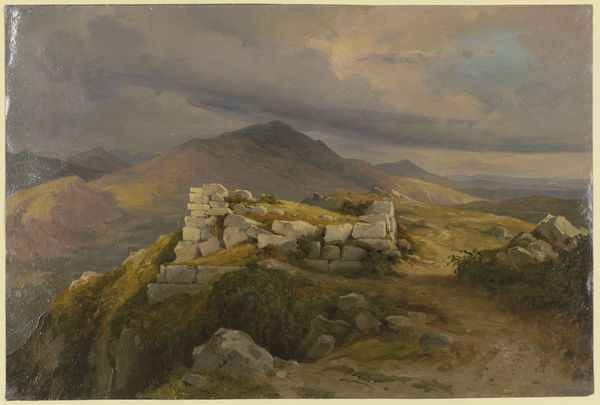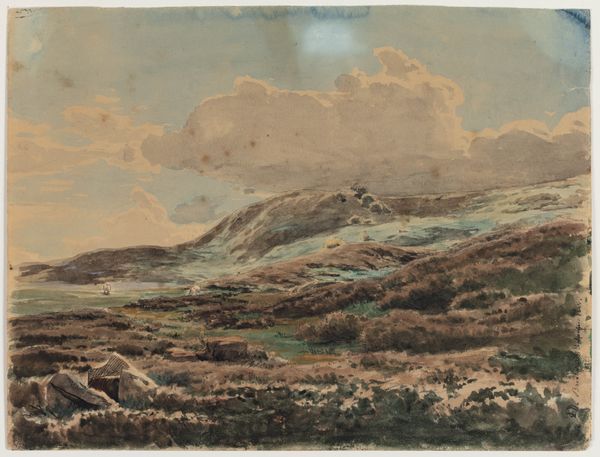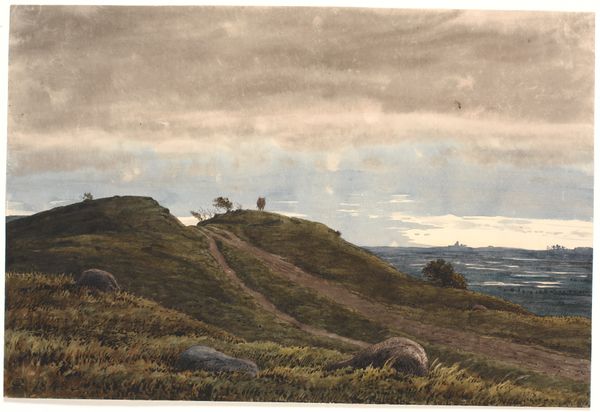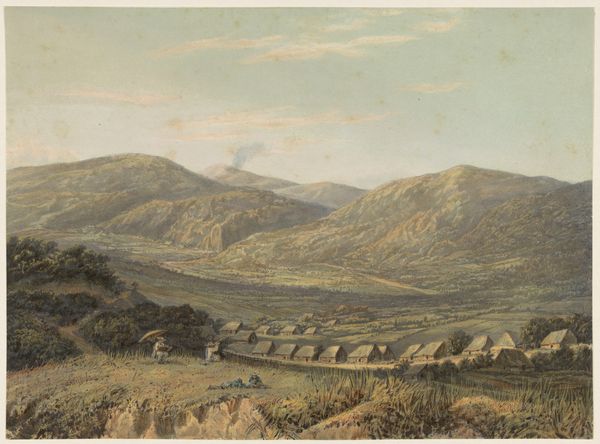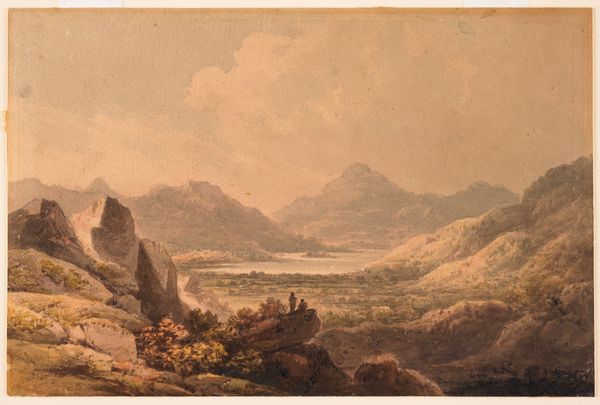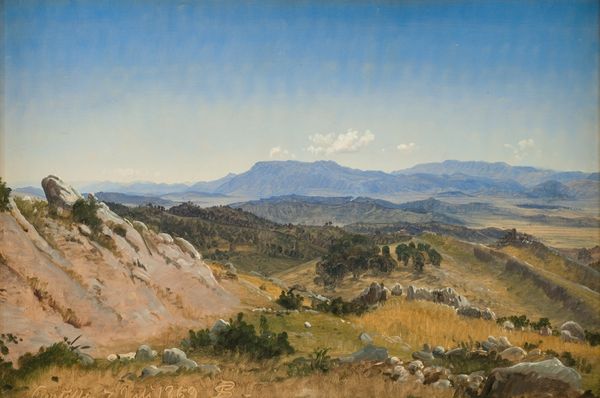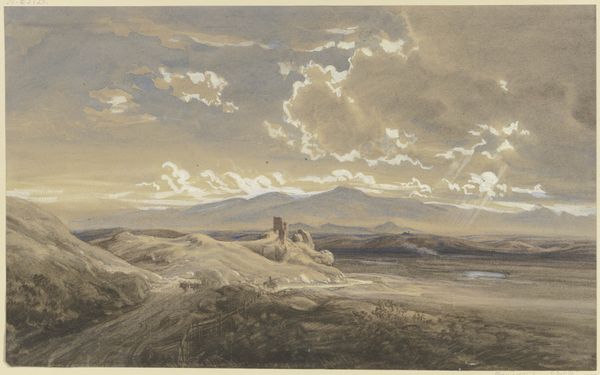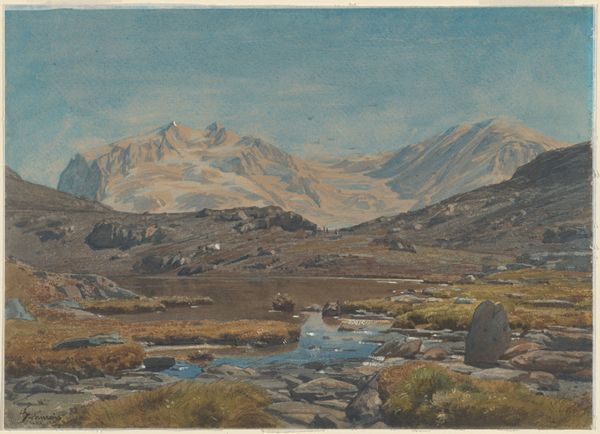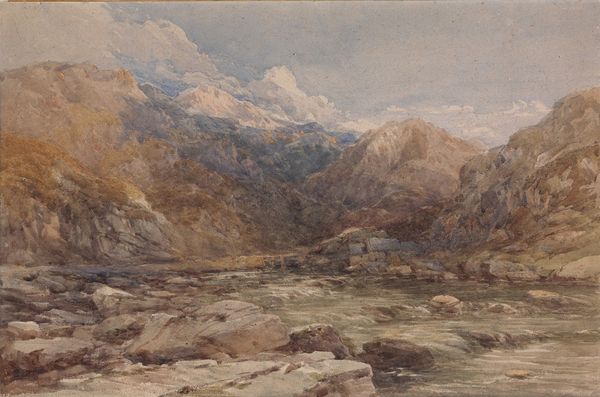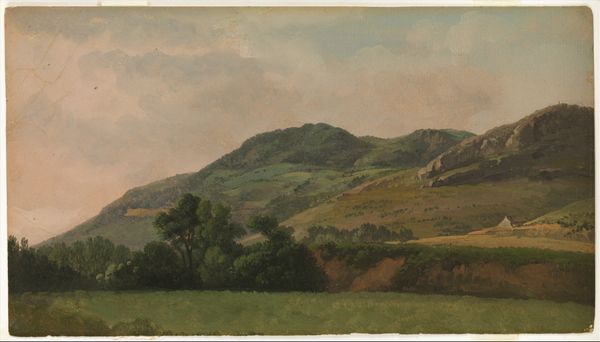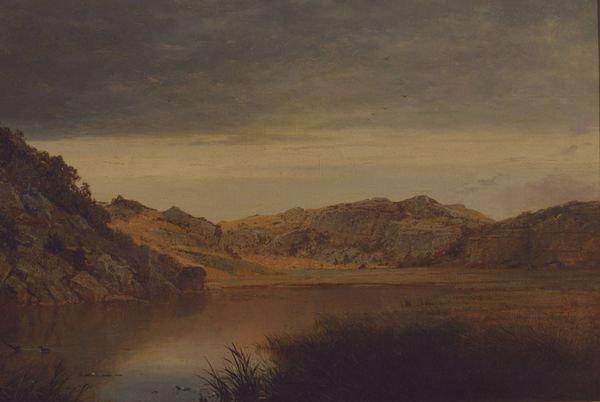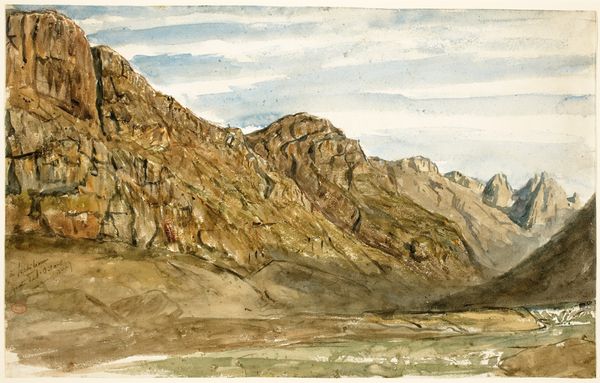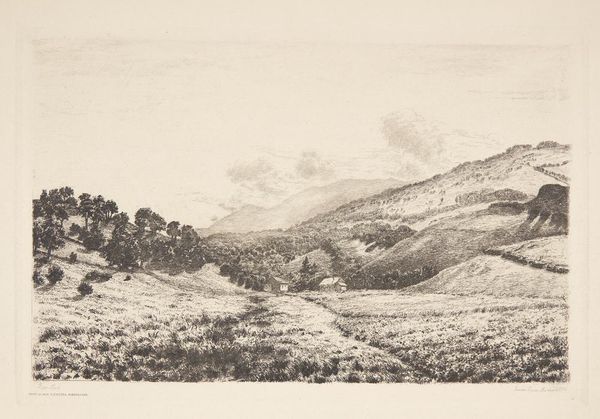
Dimensions: overall: 58.4 x 94.2 cm (23 x 37 1/16 in.)
Copyright: National Gallery of Art: CC0 1.0
Editor: So this is William Trost Richards' "Paradise, Newport" from 1877, a watercolor drawing capturing a very picturesque landscape. The first thing that strikes me is the sheer tranquility, it almost feels like looking into a dream. How do you interpret this work? Curator: It’s interesting you use the word dream because landscapes have long served as projection screens for cultural anxieties and utopian desires. This scene, bathed in soft light, shows both grandeur and serenity, reminding us of the Romantic ideal of the sublime. It suggests that Paradise isn’t necessarily a far-off place, but exists within the American landscape. Note the placement of those grazing sheep, very common. Do you notice any recurring motifs of pastoral life? Editor: I guess so, sheep symbolize innocence and peace in lots of artworks? Is there something specific here? Curator: Precisely. Sheep, especially in idyllic scenes, harken back to classical pastoral traditions, evoking a sense of harmony between humans and nature. But here, I also see it intertwined with American notions of westward expansion and stewardship of the land. It presents the American landscape as both a new Eden and a space ready for cultivation, even ownership. Editor: So, this beautiful landscape is communicating ideas of possession and expansion? I never would've guessed. Curator: Symbolism often layers itself across centuries. Richards masterfully uses the romantic language of landscape to evoke complex ideas about national identity and cultural memory. Consider the contrast between the rough, untamed rocks and the domesticated sheep— a visual representation of this ongoing dialogue between wilderness and civilization. Editor: I'm seeing the painting in a completely different light. I had assumed it was just scenery, not a meditation on cultural memory! Curator: And that’s the power of images. They echo with the whispers of history, if you know how to listen.
Comments
No comments
Be the first to comment and join the conversation on the ultimate creative platform.
